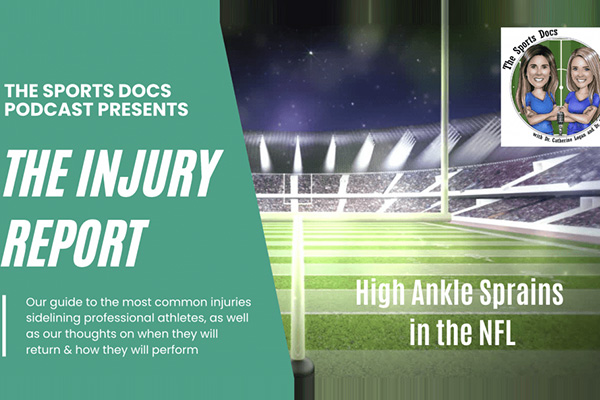
Let's chat about high ankle sprains in the NFL — most recently sidelined Khalil Herbert of the Chicago Bears and Saquon Barkley earlier this year of the NY Giants.
What is the mechanism of a high ankle sprain?
What are the reatment options for these players?
When do these athletes typically return to play and how do they perform?
Here is a high level s ummary
- A high ankle sprain occurs when the ankle is externally rotated, which causes the talus to push the fibula away from the tibia, resulting in an injury to the syndesmosis.
- Despite getting a lot of attention in the media, high ankle sprains are not that common. Though the incidence in the NFL is steadily rising, in 2019 the rate was still just 2.5 per 10,000 athlete exposures.
- High ankle injuries occur most commonly in offensive players – offensive linemen (36.5%) followed by wide receivers (24%). Most occur during regular season and game play.
- On exam, the height of syndesmosis tenderness correlates with time to return to unrestricted play with higher injury indicating large zone of syndesmosis injury and predicting lengthier recovery.
- Overall, 90% of players are able to return to play after a high ankle sprain. A recent study by Defroda and colleagues found that older age at injury was associated with decreased RTP. Also, defensive players are able to return to play faster than offensive players.
- While there is no literature looking at performance outcomes after high ankle sprains specifically, a 2022 study did investigate NFL performance metrics after ankle injuries in general. Desai and colleagues found that ankle sprains negatively affected the performance of NFL players and number of games played – even multiple years after the injury, despite a relatively high RTP rate of 91%.
This and more on our latest episode! Listen






